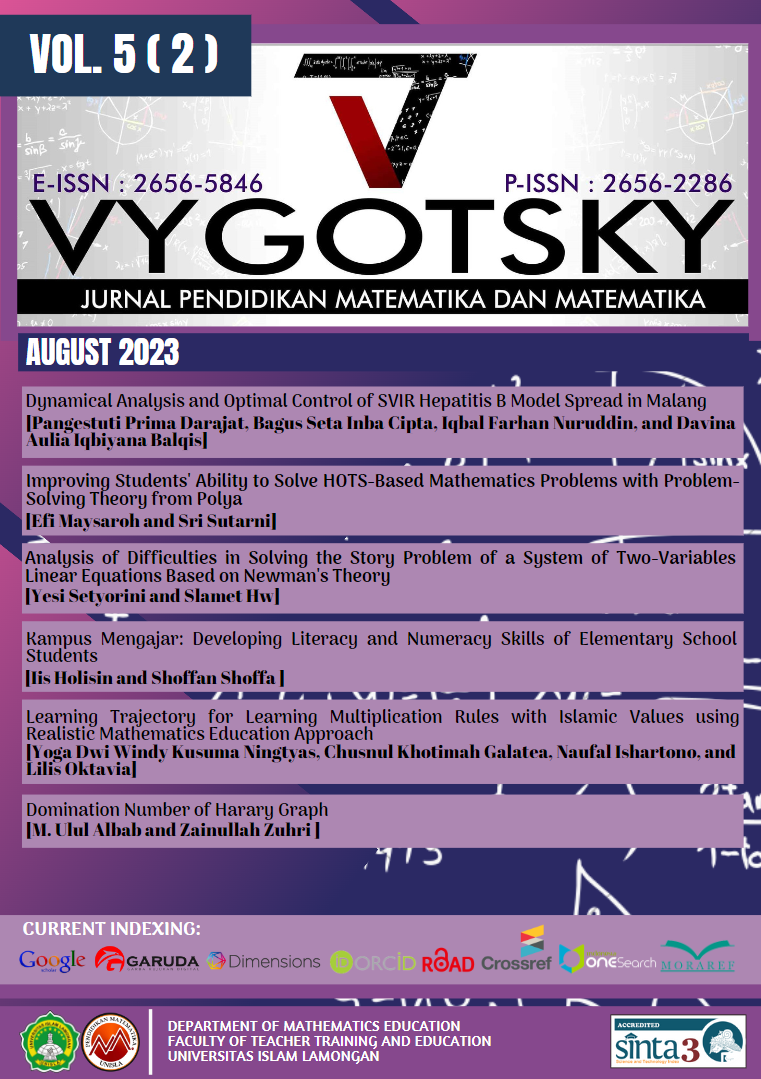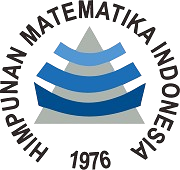Kampus Mengajar: Developing Literacy and Numeracy Skills of Elementary School Students
DOI:
https://doi.org/10.30736/voj.v5i2.755Keywords:
Kampus Mengajar, Literacy Skills, Numeracy SkillsAbstract
This research aims to determine the implementation of the Teaching Campus as an effort to grow the literacy ability of elementary school students. The method used is descriptive with a qualitative approach. The subjects of the research consisted of students of SD Budi Yakin Surabaya and students of SDN Langkap Madura. Data were collected using questionnaires, interviews, and documentation techniques. The results showed that students' literacy and numeracy skills have grown and developed. This can be seen from the increased understanding of the material learned, students can retell their reading results well. Students' dependence on teachers when working on LKS is reduced. The recommendation for campuses is that campuses must be able to prepare students' abilities as well as possible so that campus teaching programs provide benefits to schools.Downloads
References
Ervayani, E., Holisin, I., & Shoffa, S. (2016). Penerapan teori belajar Bruner dengan pendekatan pendidikan matematika realistik di kelas III SD Muhammadiyah 9 Surabaya. MUST: Journal of Mathematics Education, Science and Technology, 1(1). https://doi.org/10.30651/must.v1i1.102
Feriyanto, F. (2022). Strategi Penguatan Literasi Numerasi Matematika bagi Peserta Didik pada Kurikulum Merdeka. Gammath, 07(September), 86–94.
Hendrowati, T. Y., & Sunanto, R. F. (2021). Numeracy and literacy skill in elementary school students: The utilization of kampus mengajar perintis program. Desimal: Jurnal Matematika, 4(3), 365–372. https://doi.org/10.24042/djm.v4i3.10462
Karo-karo S, I. R., & Rohani, R. (2018). Manfaat Media Pembelajaran. AXIOM, 21(1), 1–9.
Kemendikbudristek. (2021). Modul Literasi Numerasi Di Sekolah Dasar. Modul Literasi Numerasi Di Sekolah Dasar, 1, 22.
Laja, Y. P. W. (2022). Analisis Kesulitan Mahasiswa Pendidikan Matematika dalam Menyelesaikan Soal Limit Trigonometri. Mosharafa: Jurnal Pendidikan Matematika, 11(1), 37–48. https://doi.org/10.31980/mosharafa.v11i1.1129
Novitasari, M., Narimo, S., Fajri, D. N., & Raisia, A. (2022). Critical Thinking Skills Through Literacy and Numeration Oriented Mathematics Student Worksheet. Jurnal Basicedu, 6(4), 5775–5784. https://doi.org/10.31004/basicedu.v6i4.3173
Panjaitan, P., Simanjuntak, M., Silitonga, F. D., Napitupulu, L., Moenda, N., Silitonga, S., & Syahfitri, D. (2022). Implementasi Program Kampus Mengajar Angkatan Ii Dalam Kegiatan Mengajar Siswa Kelas 1 Sd Di Sd Negeri 177041 Simarhompa Pada Tahun 2021. MARTABE: Jurnal Pengabdian Masyarakat, 5(3), 955–967.
Saefurohman, S., Maryanti, R., Azizah, N. N., Fitria, D., Husaeni, A., Wulandary, V., & Irawan, A. R. (2021). Efforts to increase numeracy literacy of Elementary School Students through Quiziz learning media. ASEAN Journal of Science and Engineering Education, 1(3), 167–174.
Safitri, F. A., Mukhlisoh, F. N., Firdhayanti, R., Samsiah, E., Darmawan, R. D., Kadarwati_, Safianti, S., Anggraeni, S. P., Laili, N.-, Shoffa_, E. S., & Pengantar: Holisin, I. (2021). Campus Teaching Experience. In S. Shoffa (Ed.), Campus Teaching Experience (p. 116). um surabaya publishing.
Salsabilah, A. P., & Kurniasih, M. D. (2022). Analisis kemampuan literasi numerasi ditinjau dari efikasi diri pada peserta didik SMP. Edumatica : Jurnal Pendidikan Matematika, 12(2), 138–149.
Salvia, N. Z., Sabrina, F. P., & Maula, I. (2022). Analisis Kemampuan Literasi Numerasi Peserta Didik Ditinjau Dari Kecemasan Matematika. ProSANDIKA UNIKAL …, 3(2019), 352–360.
Setiawan, F., & Sukamto, S. (2021). Implementasi Kampus Mengajar Perintis (KMP) sebagai Cikal Bakal Penggerak Pembelajaran Literasi dan Numerasi di Sekolah Dasar. Primary: Jurnal Pendidikan Guru Sekolah Dasar, 10(2). https://doi.org/10.33578/JPFKIP.V10I2.8251
Silitonga, E. A., & Simanjuntak, M. R. (2022). Pelatihan Peningkatan Kemampuan Literasi-Numerasi Siswa Sekolah Dasar Sebagai Implementasi Kegiatan Program Kampus Mengajar Angkatan 3 Pendahuluan. Https://Madaniya.Pustaka.My.Id/Journals/Contents/Article/View/255, 3(3), 623–636.
Suwarno. (2021). Pentingnya Keterampilan Literasi Dan Numerasi. Binus University, 1.
Syofyan, H., Susanto, R., Wijaya, Y. D., Vebryanti, V., & Tesaniloka P, M. (2019). Pemberdayaan Guru Dalam Literasi Untuk Meningkatkan Kemampuan Berpikir Kritis Siswa. International Journal of Community Service Learning, 3(3), 127–132. https://doi.org/10.23887/ijcsl.v3i3.20816
Tyas, A. I., & Rahmawati, F. P. (2022). Implementation of Literacy and Numeracy through Media Smart Apps Creator (SAC) in Elementary School Student. 6(3), 575–584.
Wati, U. A. (2015). Hakikat, Fungsi, Manfaat Media dan Sumber Belajar. Media Dan Sumber Belajar SD.
Winarni, S., Kumalasari, A., & Rohati, M. (2021). Efektivitas Video Pembelajaran Matematika Untuk Mendukung Kemampuan Literasi Numerasi Dan Digital Siswa. AKSIOMA, 0(2), 574–583. https://doi.org/https://doi.org/10.24127/ajpm.v10i2.3345
Downloads
Published
How to Cite
Issue
Section
License
Copyright:
Authors who publish their manuscripts in this Journal agree to the following conditions:
- Copyright of any article on Vygotsky: Jurnal Pendidikan Matematika dan Matematika is held solely by the author under the Creative Commons Attribution 4.0 International license (CC BY NC SA).
- Authors can submit papers separately, arrange non-exclusive distribution of manuscripts that have been published in this journal into other versions (e.g. sending to the author's institutional repository, publication in a book, etc.) by acknowledging that the manuscript has been published for the first time in Vygotsky: Jurnal Pendidikan Matematika dan Matematika.
License:
Vygotsky: Jurnal Pendidikan Matematika dan Matematika is published under the terms of the Creative Commons Attribution 4.0 International License (CC BY NC SA). This license permits anyone to copy and redistribute this material in any form or format, compile, modify and develop this material for any purpose as long as it is not for commercial purposes. Additionally, anyone must provide credit and distribute contributions under the license of the creator of the original work.











